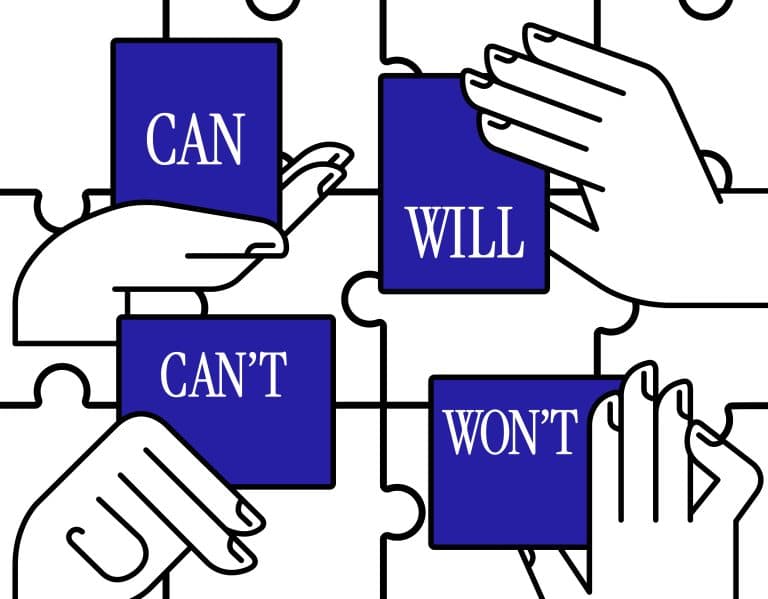
You’ve heard that leadership is all about knowing the strengths and weaknesses of the people under you—but nobody talks about what to do with all that knowledge. How do you make the most of the unmotivated ones in your team, and how can the high performers benefit the organisation?
𝗧𝗵𝗲 𝗦𝗸𝗶𝗹𝗹-𝗪𝗶𝗹𝗹 𝗠𝗮𝘁𝗿𝗶𝘅 𝗰𝗮𝗻 𝗽𝗿𝗼𝘃𝗶𝗱𝗲 𝗮 𝗱𝗲𝘁𝗮𝗶𝗹𝗲𝗱 𝗮𝗻𝗱 𝗰𝗼𝗺𝗽𝗿𝗲𝗵𝗲𝗻𝘀𝗶𝘃𝗲 𝗮𝗻𝘀𝘄𝗲𝗿.
Established in the 1970s as a leadership model known as the Hersey-Blanchard Model, this 2×2 quadrant matrix, now known as the Skill-Will Matrix, continues to help managers and coaching leaders assess the ability and motivation gaps in their teams and deploy the right developmental strategies to guide their employees.
𝗦𝗼, 𝘄𝗵𝗮𝘁 𝗺𝗮𝗸𝗲𝘀 𝘁𝗵𝗲 𝗦𝗸𝗶𝗹𝗹-𝗪𝗶𝗹𝗹 𝗠𝗮𝘁𝗿𝗶𝘅 𝘀𝗼 𝗲𝗳𝗳𝗲𝗰𝘁𝗶𝘃𝗲?
Most talent management frameworks recommend assessing employees based on their soft skills and level of competence for the job to delegate the right tasks to the right people (think the DiSC model). The Skill-Will Matrix, on the other hand, categorises employees into four groups based on their ability to do an assigned task or job and their level of motivation for their work. It considers an employee’s intrinsic drive and enthusiasm for the job.
You can hire the most talented employee for the job, but if they are unwilling to do the work you’ve given them, you won’t be able to unleash their fullest potential. And the solution can’t always be to give these employees the freedom to choose the work they want.
𝗣𝗮𝗶𝗿𝗶𝗻𝗴𝘀 𝗼𝗳 𝘁𝗵𝗲 𝗦𝗸𝗶𝗹𝗹-𝗪𝗶𝗹𝗹 𝗠𝗮𝘁𝗿𝗶𝘅
𝟭. 𝗖𝗮𝗻+𝗪𝗼𝗻’𝘁
The Skill-Will Matrix calls these highly skilled but unmotivated employees the Can+Won’t employees and offers an unexpectedly effective strategy for managing them: identify their motivational drivers and incentivise them to complete tasks.
This category of employees is often bored with their role and can be found doing less work than everyone without suffering the consequences due to their high skill levels. Leaving such employees alone can lower the overall motivation of your team to do their best and make those who are hardworking disheartened by their lack of recognition.
Check-in on these employees occasionally and have honest conversations about their performance if necessary. Sometimes, simply changing their roles can do wonders for their motivation, but if that is not feasible, give them a goal to work towards and implement an incentivised performance improvement plan.
𝟮. 𝗖𝗮𝗻’𝘁+𝗪𝗼𝗻’𝘁
Low-skilled, unmotivated employees are often the ones assigned the wrong jobs. As their manager, you must reassign them to jobs and roles better suited to their skill level or send them for training.
Clarify your job expectations with them and give honest feedback about their performance. Micromanage their work if necessary and phase them out of their current role into one more suited to their ability level.
𝟯. 𝗖𝗮𝗻+𝗪𝗶𝗹𝗹
Managers tend to focus all efforts on the Can’t+Won’t and Can+Won’t employees, but firing up the Can+Will high performers on your team can dramatically change the atmosphere of your team.
Can+Will employees are often good at what they do and highly motivated, but anyone who doesn’t receive the recognition they deserve will quickly lose their motivation and turn into Can+Won’t people. Thus, you must empower these high performers and affirm their work.
Offer these employees opportunities to grow or develop their leadership potential by delegating more responsibilities. They might be self-driven and self-motivated, but that’s no reason to neglect guiding and challenging their status quo. They thrive on new challenges.
𝟰. 𝗖𝗮𝗻’𝘁+𝗪𝗶𝗹𝗹
Most new hires fall into the Can’t+Will category. They’re super motivated to learn but don’t yet possess the experience and ability to do the job well. These employees have the most potential of all those under you. If you invest the time and energy to train them for the job, they’ll quickly grow into competent and reliable employees.
Of course, the prerequisite is that you provide constant support and guidance to develop their skills and give them opportunities to gain experience and learn from their more seasoned peers. Take the time to map out training and development plans for these employees and appoint mentors (even better if you can coach them occasionally) so they can be nurtured into the talents you need for the job.
There are no worthless employees, only poorly motivated ones. Thus, the secret to effectively managing a team lies in motivating your unmotivated employees. With the Skill-Will Matrix and its developmental framework, that’s a walk in the park!
Want more resources to manage your team better? Employ our human resource services to eliminate the tedious administrative tasks that often hinder your managerial work. Get in touch with our experienced consultants to learn more!


